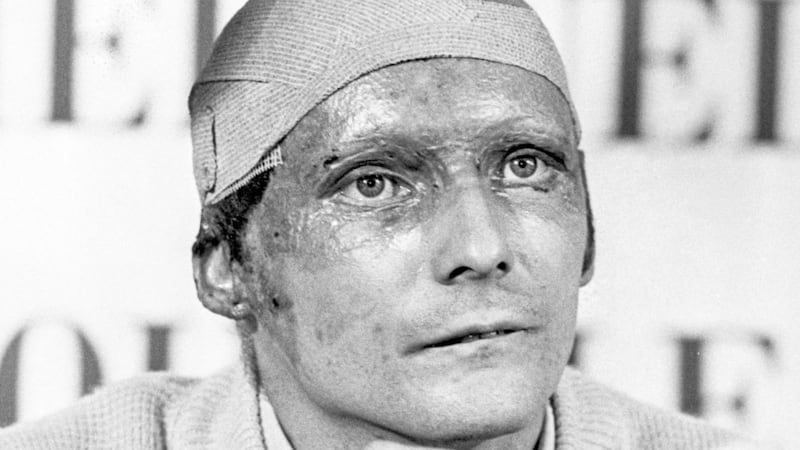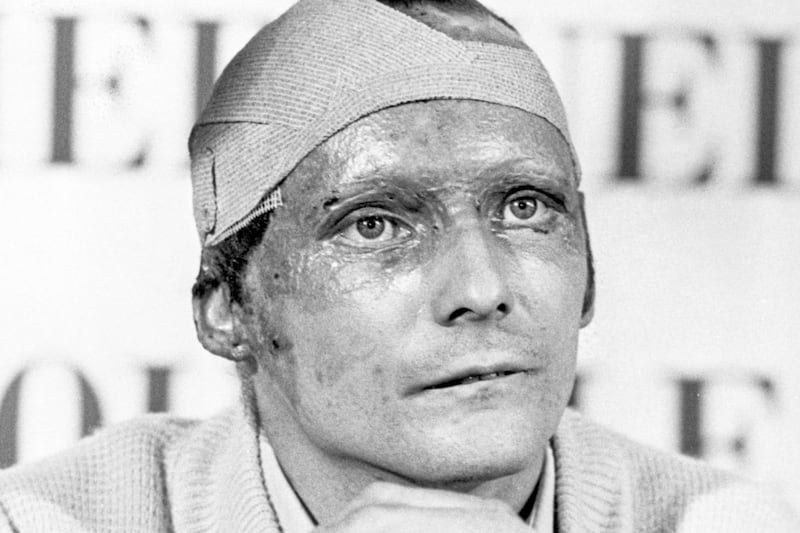'LEGEND' has become a much overused word. It is particularly devalued when bandied around to describe actors, singers, sports 'stars' and other 'personalities' of modest accomplishment who have enjoyed 15 minutes of fame.
Journalists are the worst offenders, not least because a professional wordsmith should know better.
Consider this headline: "Declan Donnelly thanks 'legend' Supervet Noel Fitzpatrick for treating his pet dog." Where to begin?
There's a dissertation to be done on how the once respectable idea that a reporter's writing ought to improve over time has faded, just as the population of legends resident in the media has exploded.
Now I've got that off my chest, on to a figure who genuinely qualifies as a legend: Niki Lauda.
The Austrian racing driver died this week at the age of 70 with three Formula One drivers' championships to his name.
That alone would mark out Lauda for greatness. But the legend emerged from the flames and wreckage of a crash at the green hell of the deadly Nürburgring in 1976.
Lauda's injuries, which included third degree burns and the effects of breathing in burning chemical fumes, left him on the edge of death.
In hospital, a priest administered the Last Rites. "He left without talking to me," Lauda recalled.
"This really upset me because I thought that he would tell me, 'God will help you to stay alive'.
"But he didn't. So I said I'll fight for my life as long as I can."
He wore the crash scars on his body for the rest of his life. Inside, his lungs were damaged.
But his singular mental resilience was, if anything, strengthened through adversity that would have paralysed mere mortals.
He turned up at the Italian Grand Prix 40 days after the crash with the raw burns on his head swathed in bandages. When he removed his helmet, the bandages were soaked in blood from his wounds.
As if that wasn't enough, the injured Lauda became locked in a famously intense battle for the championship with his great friend, the flamboyant English driver James Hunt.
Lauda's burn injuries included damage to his eyelids and tear ducts. Unable to blink, he retired from that year's championship-deciding Japanese GP; Hunt finished in third place, enough to win the title from the Austrian by a single point.
It was an extraordinary climax to an extraordinary season - no wonder they made a film about it.
Lauda easily won the 1977 championship and retired at the end of 1979, saying he had become fed up driving "around in circles".
In 1982 he was coaxed out of retirement to join the McLaren team, going on to win the 1984 world championship by a mere half-point over Alain Prost.
That third title came seven years after his second championship win. It remains the longest gap between successive driver championships in F1 history.
Aficionados of any sport should appreciate the significance of this; as the name suggests, Formula One is run to a set of technical rules and regulations, or a formula, which changes substantially every few years.
The McLaren in which Lauda won his third championship, then, was a radically different car to the Ferraris in which he raced in the 1970s.
It means Lauda is one of a very small number of drivers who have won championships in different eras of the sport, but arguably the only one to have done so when the differences between the cars have been so stark.
He retired from driving in F1 for second - and final - time at the end of the 1985 season, returning to his airline business.
Later, he took on management roles at Ferrari, Jaguar and, with conspicuous success, Mercedes.
Another aspect of the Lauda legend grew from a fatal tragedy involving one his LaudaAir Boeing 767 aircrafts.
It crashed over Thailand in 1991, claiming 224 lives. Lauda was unsatisfied with the official explanation about the cause of the crash - essentially, human error caused by the pilot being unable to recover the plane from a dive caused when an engine thrust reverser spontaneously deployed.
Lauda, an experienced pilot himself, was unrelenting in his pursuit of the truth, including persuading Boeing to allow him to repeat the crash scenario in their flight simulator. Eventually his efforts uncovered a design flaw which affected the entire Boeing fleet.
Boeing ordered a remedy so a similar accident couldn't happen again; countless air travellers' journeys were made safer because Niki Lauda helped save their lives. A legend indeed.








